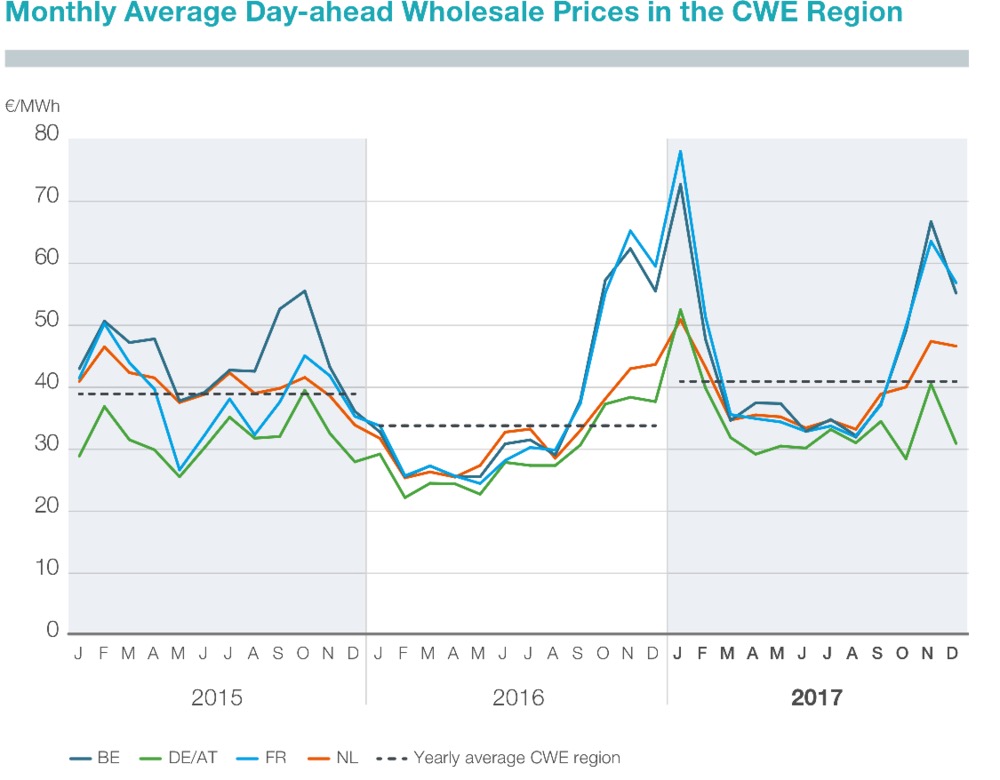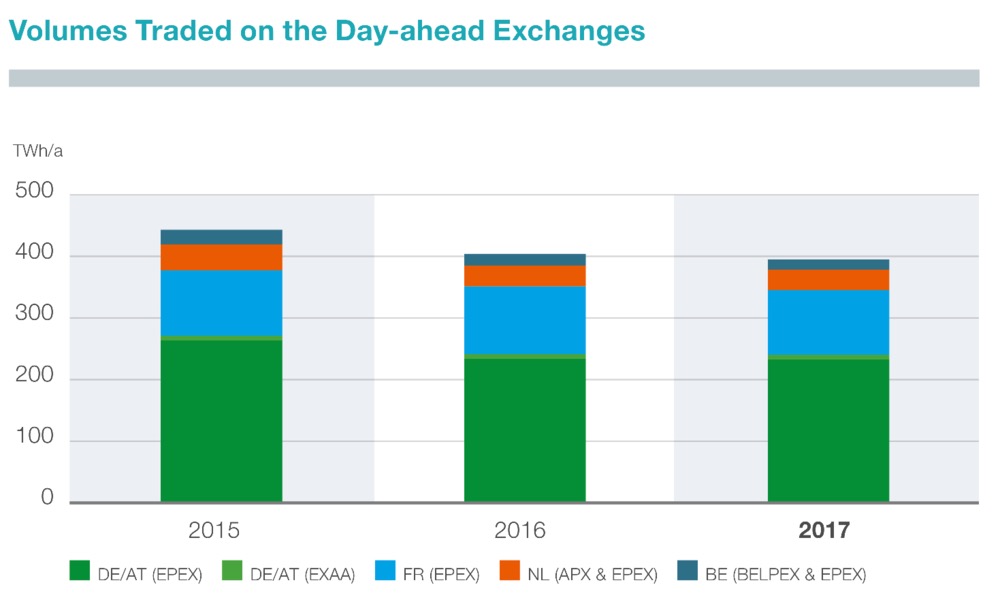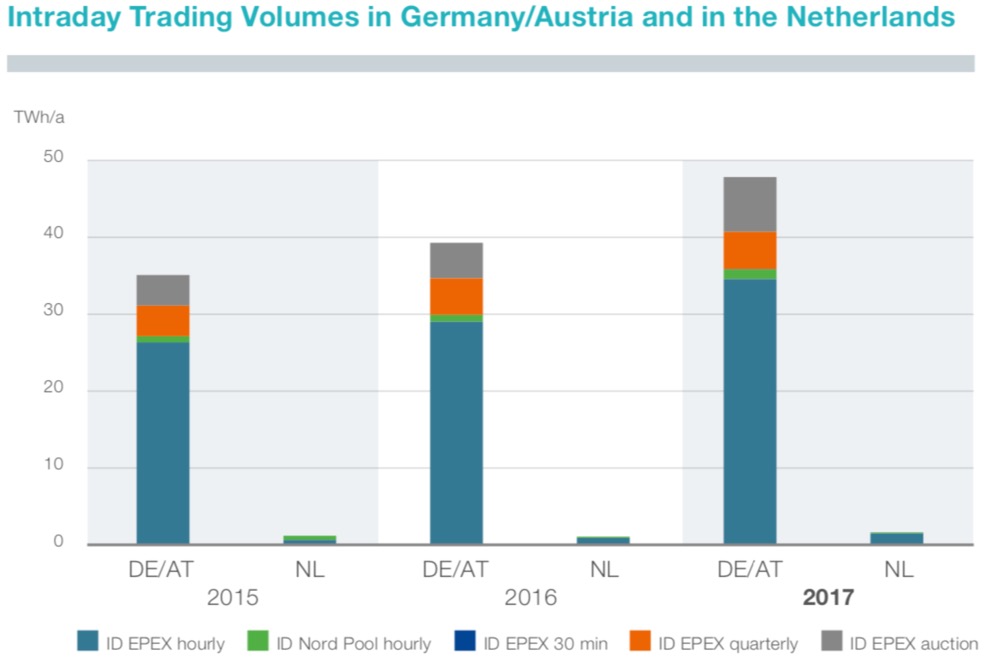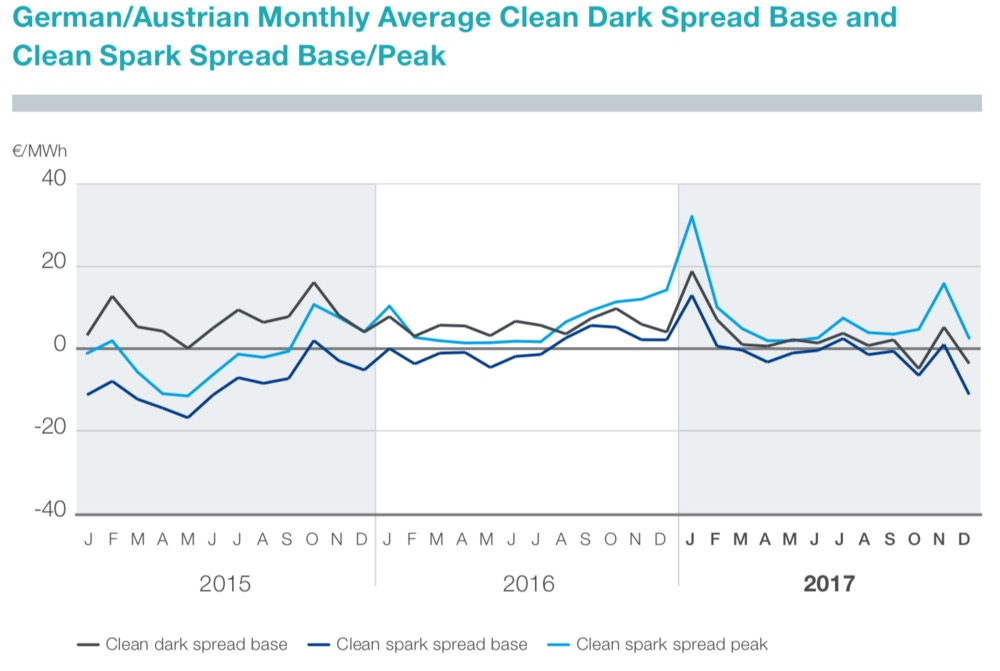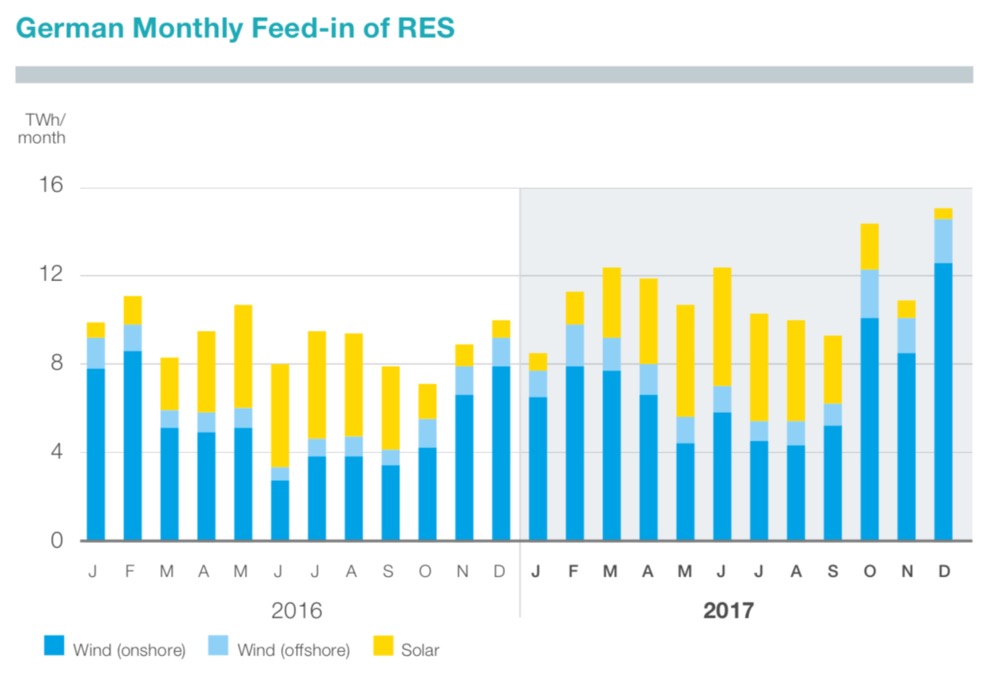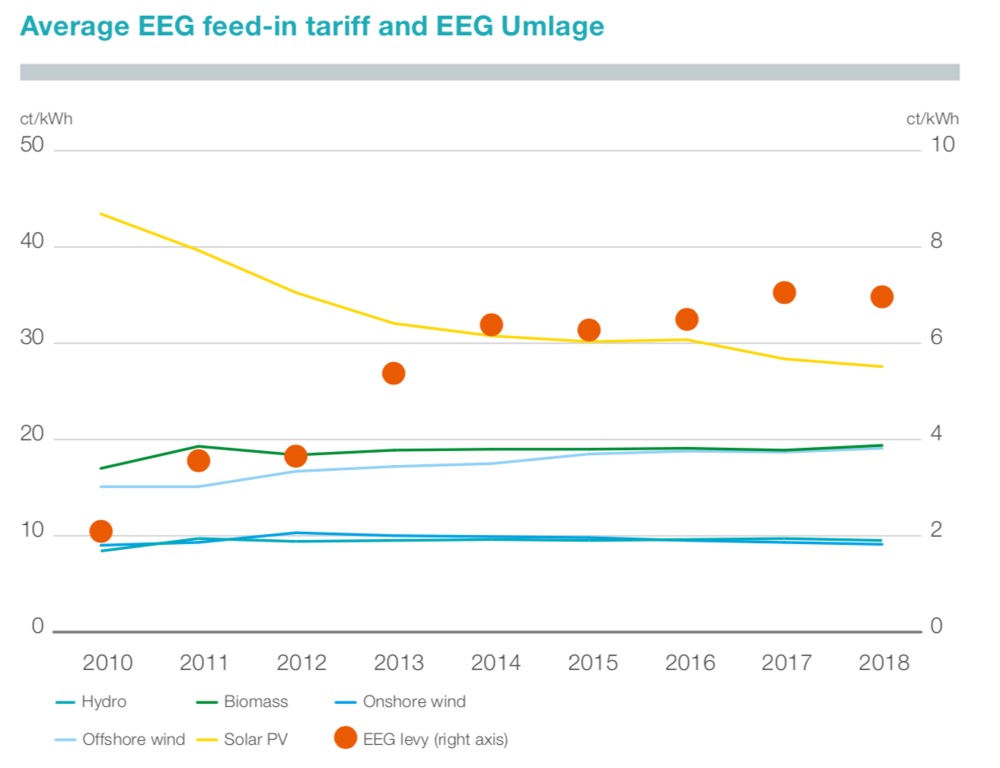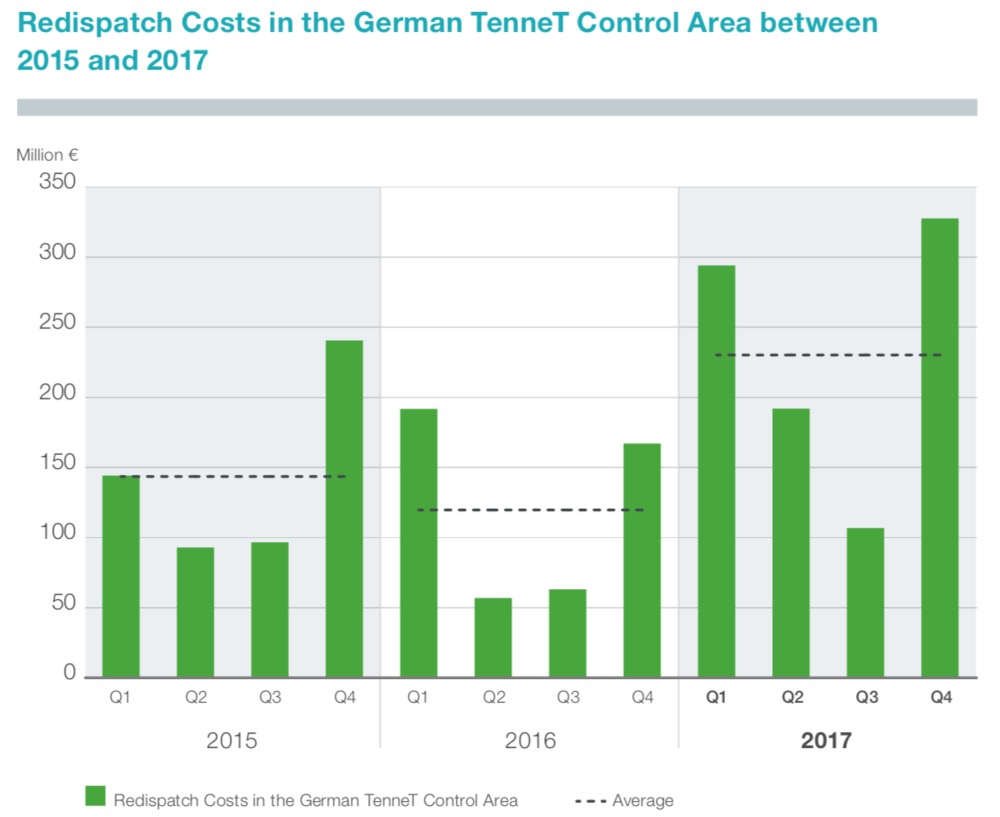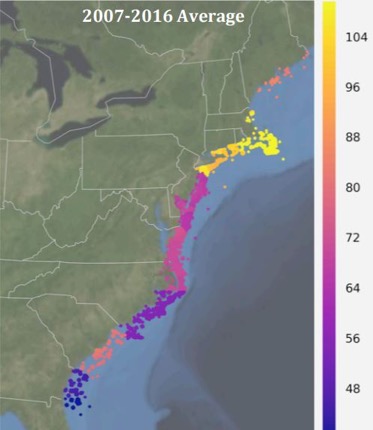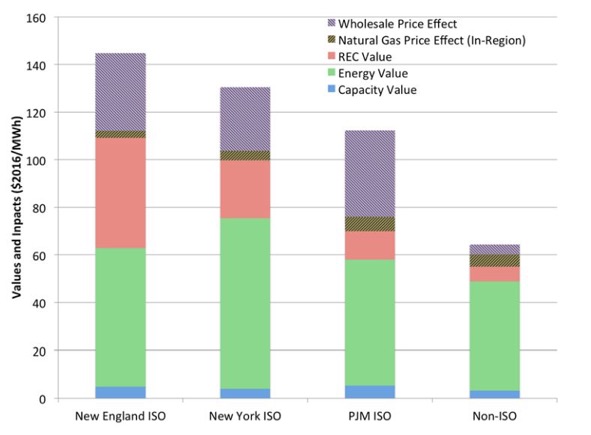![]()
High voltage switchgear
SF6, the most potent greenhouse gas in existence, was banned for all applications in the EU in 2014 – except in the electricity industry. The reason for the exemption, writes Nicholas Ottersbach, researcher at German cleantech startup Nuventura, was that there was no viable alternative. But according to Ottersbach that is no longer the case. He calls on EU policymakers to ban SF6, in the electricity industry when the relevant EU legislation is reviewed in 2020.
In 2014 the European Union (EU) reinforced a 2006 F-Gas regulation, aiming to strengthen measures to contain the polluting emissions of fluorinated gases (F-gases) (EU Commission, 2015). F-gases are a family of man-made gases with the strongest greenhouse effect. Of all the F-gases, SF6 (the focus of this paper), is the most potent.
This regulation’s aim is to bring down the EU’s F-gas emissions by two-thirds from 2014 levels by 2030 as part of the ultimate objective of cutting overall greenhouse gas (GHG) emissions by at least 80% by 2050 against 1990 levels (Biasse, 2014). However, the new restrictions on the use of SF6 did not affect its largest user, the electrical power equipment industry. The EU regulation mentions phase-out dates for F-gases used in many applications, depending on their global warming potential (GWP) yet it does not mention SF6 in switchgear meaning, in effect, that there are no restrictions (Biasse, 2014).
SF6 is a long-lived, highly potent greenhouse gas. It is manmade and combines excellent electrical properties with chemical stability and low toxicity.
Having said this, the regulation does have a provision for reviewing the situation in 2020 which should provide fresh impetus for policy makers, and interested actors, to give this gas the serious attention it deserves. This is especially pertinent as large parts of EU regulations are often followed by developing countries’ laws, to get access to the EU market.
What is SF6? and how is it used?
SF6 is a long-lived, highly potent greenhouse gas. It is manmade and combines excellent electrical properties with chemical stability and low toxicity. Moreover, It’s non-flammable and low in cost. These characteristics have led to its widespread and enthusiastic adoption by the electrical industry, which uses approximately 80% of all SF6 produced (Powell, 2002: 6).
Within the electrical industry SF6 is used as an insulating medium for medium (MV) and high (HV) voltage electrical switchgear. A switchgear is the combination of electrical disconnect switches, fuses or circuit breakers used to control, protect and isolate sections of electrical grids. Low-voltage (LV) switchgear are used for controlling electrical circuits within buildings, medium voltage (MV) switchgear for controlling the electrical grids within cities and towns, and high voltage (HV) switchgear for grids that span a greater geographical area such as countries and regions.
Is SF6 a danger to human health?
In its normal and inert form SF6 is relatively harmless to humans. However, when exposed to electrical discharges through everyday usage within SF6-filled equipment, highly toxic by-products are produced that pose a serious threat to those in close proximity to the switchgear (ICF Consulting, 2002: 1).
These byproducts include, among other things, disulfur decafluoride (S2 F10) which is a highly toxic gas (Blackburn 2015: 2). It has been referred to by the US Environmental Protection Agency (EPA) as “the byproduct of greatest concern due to its relatively high toxicity.” (ICF Consulting, 2002: 2)
Unlike gases such as CO2, SF6 has no natural sink, origin or effective disposal method, making its accumulation in the atmosphere virtually irreversible
S2 F10’s toxicity is on a par with phosgene, the infamous chemical warfare pulmonary agent used during the First World War (Blackburn, 2015: 2). Its weaponization was also considered during the Second World War due to its toxic nature, as it provided little warning of exposure to the victim (Blackburn, 2015: 2).
The presence of such by-products is of real concern due to the documented fact of leakage, as well as uncontrolled releases or discharges that occur during routine development, testing, commissioning, maintenance and repair, and decommissioning of SF6 -filled equipment. For companies using SF6 these dangers represent, at best, increased handling costs due to required safety measures, and at worst a real risk to human life. They also lead to legitimate concerns over the health and welfare of utility employees as well as the communities that host switchgear stations.
How environmentally damaging is it?
With a GWP of around 22,800 over a 100-year time horizon, SF6 is the most potent greenhouse gas regulated under the Kyoto Protocol (Rigby et al, 2010: 10305). Its GWP of 22,800 means that it is 22,800 times more effective at trapping infrared radiation (i.e., creating the greenhouse effect) than an equivalent amount of carbon dioxide over a 100-year period (Blackburn, 2015: 5).
Moreover, it is widely believed to have an atmospheric lifetime of 3,200 years (Diggelmann et al, 2016: 70), although recent research suggests shorter lifetimes. Some say 850 years (with a range from 580 to 1,400 years) (Ray et al, 2017: 4626) while other research suggesting closer to 1,278 years (with a range of 1,120 to 1,475) (Kovács, 2017: 883). In any case, it is clearly an extremely long-lived gas, and poses a serious problem through its contribution to the immediate threat of global warming.
As well as having an extremely long lifetime, unlike gases such as CO2, it has no natural sink, origin or effective disposal method, making its accumulation in the atmosphere virtually irreversible (Blackburn, 2015: 5). Without disposal methods that completely destroy SF6, it can be expected that all of the SF6 that has been or will be produced will eventually end up in the atmosphere (Dervos and Vassiliou, 2000: 138).
Studies also show that atmospheric concentrations of SF6 have increased by more than a factor of 10 since measurements began in 1973 (Rigby et al, 2010: 10305). They also found that global emissions are higher now than ever, and have increased by almost 50% between 2000 and 2010 (Rigby et al, 2010: 10305).
Global annual SF6 production is currently around 8,000 tonnes (Damsky, 2016: 1). Furthermore, based on atmospheric data, global SF6 emissions in 2012 were 8,100 tonnes (Dunse et al, 2015: 20) essentially creating a production-emission parity. These emissions are the equivalent of the annual greenhouse footprint of approximately 40 million cars (EPA, 2017). Despite these environmental consequences, SF6’s use in the electrical industry is forecast to grow by around 50%, from 2005 levels, by 2030 (Rhiemeier et al, 2010: 29). .
Has the environmental impact even been underestimated?
Although SF6’s GWP of 22,800 firmly establishes it as the most dangerous known greenhouse gas, the number may be unrepresentative of its true environmental threat. The IPCC, for example, gives SF6 a higher GWP of 23,500 (Myhre & Shindell, et al. 2013: 733). Moreover since GWP accounts only for 100 years of the gas’ atmospheric lifetime, the real impact is much higher. If one assumes a 500-year time horizon, it grows to 32,600 (IPCC, 2005) and, even then, remains only a fraction of its true impact on global warming. This begs the question as to whether the gravity of SF6’s impact on global warming has really been understood? And whether we can continue to rationalize its use in the electrical industry?
Considering that the measurement approaches on which emissions regulation is based are fundamentally erroneous, how can we be certain that the SF6-reduction measures taken so far by the EU, and by extension the electrical industry, have been effective?
Furthermore, research shows that up to 80% of SF6 emissions are not reported at all (Levin et al. 2010: 2655). A reason for this is that Asian countries, such as China, India and South Korea, who are driving the increase in emissions, do not report their SF6 emissions to the United Nations Framework Convention on Climate Change (UNFCCC) (Rigby, 2010: 10316). Another reason is that developed countries that do report emissions to the UNFCCC, such as the USA, UK, and Germany, are likely to be underestimating their emissions (Rigby et al, 2010 :10318).
Developed countries are likely under-reporting their emissions because emission reduction legislation relies on a ‘bottom-up’ measurement approach, which greatly underestimates real emissions (Weiss and Prinn, 2011: 1934). There are two broad approaches to measuring emissions: bottom-up and top-down. The bottom-up approach measures SF6 emissions at the source of emission, while the top-down approach measures changes in the atmospheric concentration of SF6. The aforementioned increase in global atmospheric SF6 emissions was measured and modelled extensively and independently by several research studies (Weiss and Prinn, 2011: 1934). They all came to the same general conclusion, namely that global SF6 emissions are greatly underestimated by bottom-up emissions reported to the UNFCCC by developed countries (Weiss and Prinn, 2011: 1934).
Considering that the measurement approaches on which emissions regulation is based are fundamentally erroneous, how can we be certain that the SF6-reduction measures taken so far by the EU, and by extension the electrical industry, have been effective?
Is the mitigation of SF6 emissions difficult? Do better solutions exist?
Due to SF6’s high GWP, its use is regulated by national and international governing bodies (Deux, 2013: 2). This creates further costs and a myriad of bureaucratic compliance legislation for companies, that must be adhered to. For example, when SF6-filled equipment is near the end of its life or has technical problems, special care must be taken in its recycling process and maintenance. Only licensed or authorized hazardous waste managers are permitted to handle, transport and recycle the gas according to national or regional regulations and standards (Deux, 2013: 4). These lifecycle management costs will continue to rise as the global demand for electricity, and, thus, switchgear, increases.
With EU regulation No 517/2014 due to be reviewed in 2020, policy makers should campaign for further legislation with the final aim of phasing out SF6
All the externalities of SF6 described in this paper have incentivised big and small manufacturers to find SF6-free solutions to switchgear. Several manufacturers – predominantly in the medium voltage (MV) level – have developed effective solutions based on vacuum switching technology in combination with solid or air insulation as alternatives for SF6 (Porte and Schoonenberg, 2009: 1). Rapid innovations in the MV range have brought into question the industry claim that SF6 is a necessary evil and that alternatives are too costly (Porte and Schoonenberg, 2009: 1). Unfortunately, similar progress has not yet been made for high voltage (HV) applications.
From a pricing perspective, research comparing SF6-containing switchgear and SF6-free switchgear found no evidence that the latter was more expensive than the former (Benner et al, 2012: 23). In actual fact, it found that SF6-free switchgear generally can be up to 10% cheaper than the corresponding SF6-containing alternative (Benner et al, 2012: 23).
Conclusion
SF6 is the most potent greenhouse gas in existence and for this reason was included in the Kyoto Protocol’s list of substances of which the use and emission should be minimized. Consequently, SF6 has been banned for all applications in which alternatives exist. However, an exception has been made for HV and MV switchgear in the electrical industry.
The rationale for this was that there was no viable alternative. However, as has been made clear this in this paper, this is no longer the case, at least not in the case of MV switchgear. There are alternatives which are technically and commercially viable. With EU regulation No 517/2014 due to be reviewed in 2020, policy makers should campaign for further legislation with the final aim of phasing out SF6. This will further invigorate the research and development of SF6 -free technologies, not only for MV switchgear, but also for HV applications. These measures will represent a significant step in the fight against climate change and also help reestablish Europe as a leader in cleantech.
Editor’s Note
Nicholas Ottersbach is a business developer and researcher at Nuventura, a cleantech startup looking to contribute to a greener, smarter and more sustainable global power sector. The company is involved in developing an alternative for SF6.
Bibliography
Benner, J., et al. 2012. ‘Validation of recent studies for the European Commission’. CE Delft. Available at: https://www.cedelft.eu/en/publications/download/1309
Biasse, J.M., 2014. ‘SF6 in Medium Voltage and High Voltage switchgear unaffected by new EU F-gas regulation’. Schneider Electric. Available at: https://blog.schneider-electric.com/utilities/2014/10/28/sf6-mv-hv-switchgear-unaffected-new-eu-f-gas-regulation/
Blackburn, L.S., 2015. ‘WHITE PAPER: SF6 Is No Longer a Necessary Evil: The Human Health and Environmental Dangers of SF6 Gas-Filled Switchgear’. Innovative Switchgear Solutions, Inc. Available at: http://www.innovative-switchgear.com/wp-content/uploads/2015/09/The-Health-Dangers-of-SF6-Gas-White-Paper.pdf
Damsky, B., 2016. ‘EPRI’s SF6 Management Program’. U.S. Environmental Protection Agency (U.S. EPA). Available at: https://www.epa.gov/sites/production/files/201602/documents/conf00_damsky_paper.pdf
Dervos, C.T., and Vassiliou, P., 2000. ‘Sulfur Hexafluoride (SF6): Global Environmental Effects and Toxic Byproduct Formation’. Journal of the Air & Waste Management Association, 50:1, 137-141. Available at: https://www.tandfonline.com/doi/pdf/10.1080/10473289.2000.10463996
Deux, J.M., 2013. ‘SF6 End-of-life Recycling for Medium and High Voltage Equipment’. Schneider Electric. Available at: http://www2.schneider-electric.com/documents/support/white-papers/renewable-energy/SF6-end-of-life-medium-high-voltage-equipment.pdf
Diggelmann, T., et al. 2016. ‘AirPlusTM: An alternative to SF6 as an insulation and switching medium in electrical switchgear’. ABB Review. Available at: https://library.e.abb.com/public/3405a31190934a8c98997eca8fc811be/ABB%20Review%202-2016_AirPlus_An%20Alternative%20to%20SF6.pdf
EPA (United States Environmental Protection Agency), 2013. ‘Global Mitigation of Non-CO2 Greenhouse Gases: 2010-2030’. U.S. Environmental Protection Agency (U.S. EPA). Available at: https://www.epa.gov/sites/production/files/2016-06/documents/mac_report_2013.pdf
EPA (United States Environmental Protection Agency), 2017. ‘Greenhouse Gas Equivalencies Calculator’. U.S. Environmental Protection Agency (U.S. EPA). Available at: https://www.epa.gov/energy/greenhouse-gas-equivalencies-calculator
EU Commission, 2015. ‘EU legislation to control F-gases’. European Union Commission. Available at: https://ec.europa.eu/clima/policies/f-gas/legislation_en
Dunse, B.L., et al. 2015. ‘Australian and global HFC, PFC, Sulfur Hexafluoride, Nitrogen Trifluoride and Sulfuryl Fluoride Emissions’. CSIRO. Available at: https://www.environment.gov.au/system/…/australian-hfc-pfc-emissions-2015.pdf
ICF Consulting, 2002. ‘Byproducts of Sulfur Hexafluoride (SF6) Use in the Electric Power Industry’. U.S. Environmental Protection Agency (U.S. EPA). Available at: https://www.epa.gov/sites/production/files/2016-02/documents/sf6_byproducts.pdf
IPCC (Intergovernmental Panel on Climate Change), 2005. ‘IPCC Fourth Assessment Report: Climate Change 2007’. IPCC. Available at: https://www.ipcc.ch/publications_and_data/ar4/wg1/en/ch2s2-10-2.html
Kovács, T. et al. 2017. ‘Determination of the atmospheric lifetime and global warming potential of sulfur hexafluoride using a three-dimensional model’. Atmos. Chem. Phys., 17, 883–898. Available at: https://www.atmos-chem-phys.net/17/883/2017/acp-17-883-2017.pdf
Levin, I. et al. 2010. ‘The global SF6 source inferred from long-term high precision atmospheric measurements and its comparison with emission inventories’. Atmos. Chem. Phys. 10, 2655– 2662. Available at: https://www.atmos-chem-phys.net/10/2655/2010/acp-10-2655-2010.html
Myhre, G. & Shindell, D., et al. 2013. ‘Anthropogenic and Natural Radiative Forcing’.
In: Climate Change 2013: The Physical Science Basis. Contribution of Working Group I to the Fifth Assessment Report of the Intergovernmental Panel on Climate Change. Cambridge University Press, Cambridge, United Kingdom and New York, NY, USA. Available at: http://www.ipcc.ch/pdf/assessmentreport/ar5/wg1/WG1AR5_Chapter08_FINAL.pdf
Porte, W., and Schoonenberg G.C., 2009. ‘Green Switching – Opportunity to avoid SF6 emission from electrical networks’. Affiliation Eaton Electric B.V. Available at: http://www.greenswitching.com/library_files/2_1_1270637301_Green%20Switching%20%20Opportunity%20to%20avoid%20SF6%20emission%20from%20electrical%20networks_2009.pdf
Powell, A.H., 2002. ‘Environmental aspects of the use of Sulphur Hexafluoride’. ERA Technology Ltd. Available at: http://www.greenswitching.com/library_files/2_1_1270551742_Environmental%20aspects%20of%20the%20use_ERA_2002-0002.pdf
Ray et al. 2017. ‘Quantification of the SF6 lifetime based on mesospheric loss measured in the stratospheric polar’. Journal of Geophysical Research: Atmospheres. Available at: https://ueaeprints.uea.ac.uk/63204/4/Ray_et_al_2017_Journal_of_Geophysical_Research_Atmospheres.pdf
Rhiemeier, J.M., et al., 2010. ‘Update on global SF6 emissions trends from electrical equipment – Edition 1.1 Ecofys Emission Scenario Initiative on Sulphur Hexafluoride for Electric Industry (ESI-SF6)’. Ecofys Germany GmbH. Available at: https://www.ecofys.com/files/files/esi-sf6_finalreport_edition11_100701_v01.pdf
Rigby, M., et al., 2010. ‘History of atmospheric SF6 from 1973 to 2008’. Atmos. Chem. Phys., 10, 10305–10320. Available at: https://dspace.mit.edu/openaccess-disseminate/1721.1/65647
Weiss, R.F., and Prinn, R.G., 2011. ‘Quantifying greenhouse-gas emissions from atmospheric measurements: a critical reality check’. Phil. Trans. R. Soc. A (2011) 369, 1925–1942. Available at: http://rsta.royalsocietypublishing.org/content/roypta/369/1943/1925.full.pdf




 Britain has chosen to secure electricity supplies through a scheme which pays power plants to be available several years in advance, but falling prices suggest this capacity market is overkill and poor value for money, with ample alternative approaches, writes energy finance consultant Gerard Wynn. Courtesy
Britain has chosen to secure electricity supplies through a scheme which pays power plants to be available several years in advance, but falling prices suggest this capacity market is overkill and poor value for money, with ample alternative approaches, writes energy finance consultant Gerard Wynn. Courtesy 
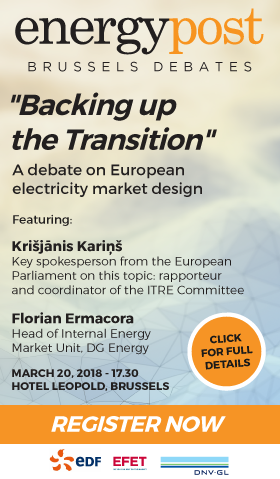

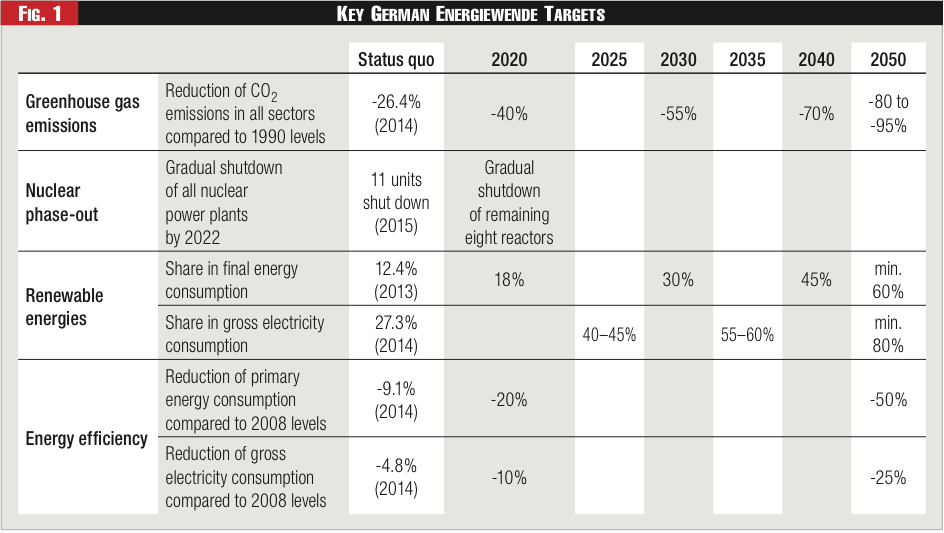
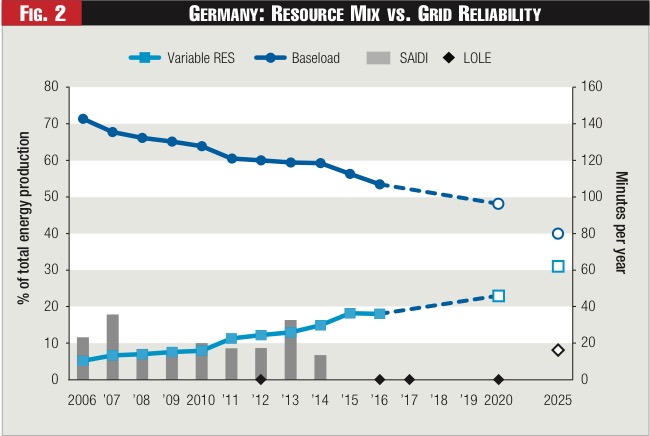
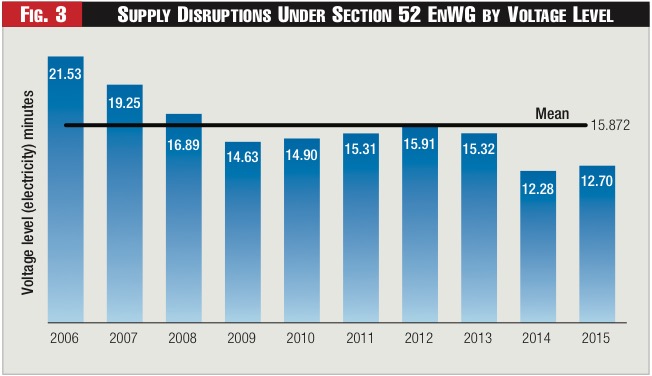
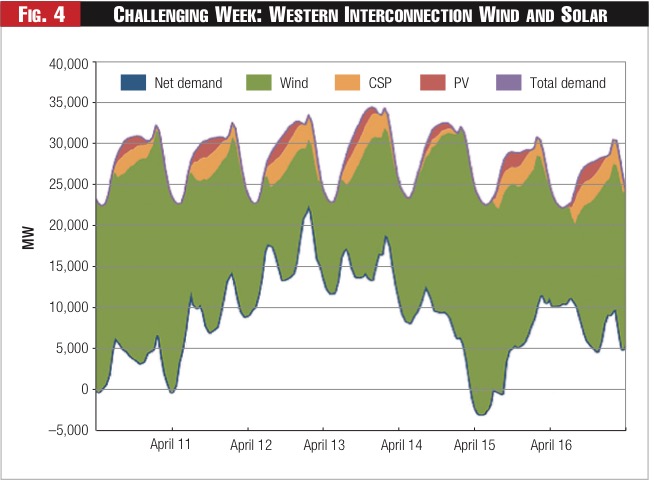


 The recent deal between German utilities RWE and Eon will lead to a concentration of power in the different segments of the energy market, writes Marius Buchmann of Jacobs University in Bremen. According to Buchmann, the big question is whether the new companies will become innovation engines or will impose new market entry barriers. Article courtesy of Buchmann’s blog
The recent deal between German utilities RWE and Eon will lead to a concentration of power in the different segments of the energy market, writes Marius Buchmann of Jacobs University in Bremen. According to Buchmann, the big question is whether the new companies will become innovation engines or will impose new market entry barriers. Article courtesy of Buchmann’s blog 





 As the number of “prosumers” with batteries grows, huge opportunities will be opened up for aggregators who will be able to optimize these behind-the-meter-assets, writes energy expert Fereidoon Sioshansi, publisher of newsletter
As the number of “prosumers” with batteries grows, huge opportunities will be opened up for aggregators who will be able to optimize these behind-the-meter-assets, writes energy expert Fereidoon Sioshansi, publisher of newsletter  Electricity distribution networks in Europe run at well below their full potential, finds a new study from the Regulatory Assistance Project (RAP). The findings show that the unused network capacity could be utilised for charging electric vehicles with little or no need for additional capacity. Smart pricing and smart grid technologies will be the keys.
Electricity distribution networks in Europe run at well below their full potential, finds a new study from the Regulatory Assistance Project (RAP). The findings show that the unused network capacity could be utilised for charging electric vehicles with little or no need for additional capacity. Smart pricing and smart grid technologies will be the keys. 




